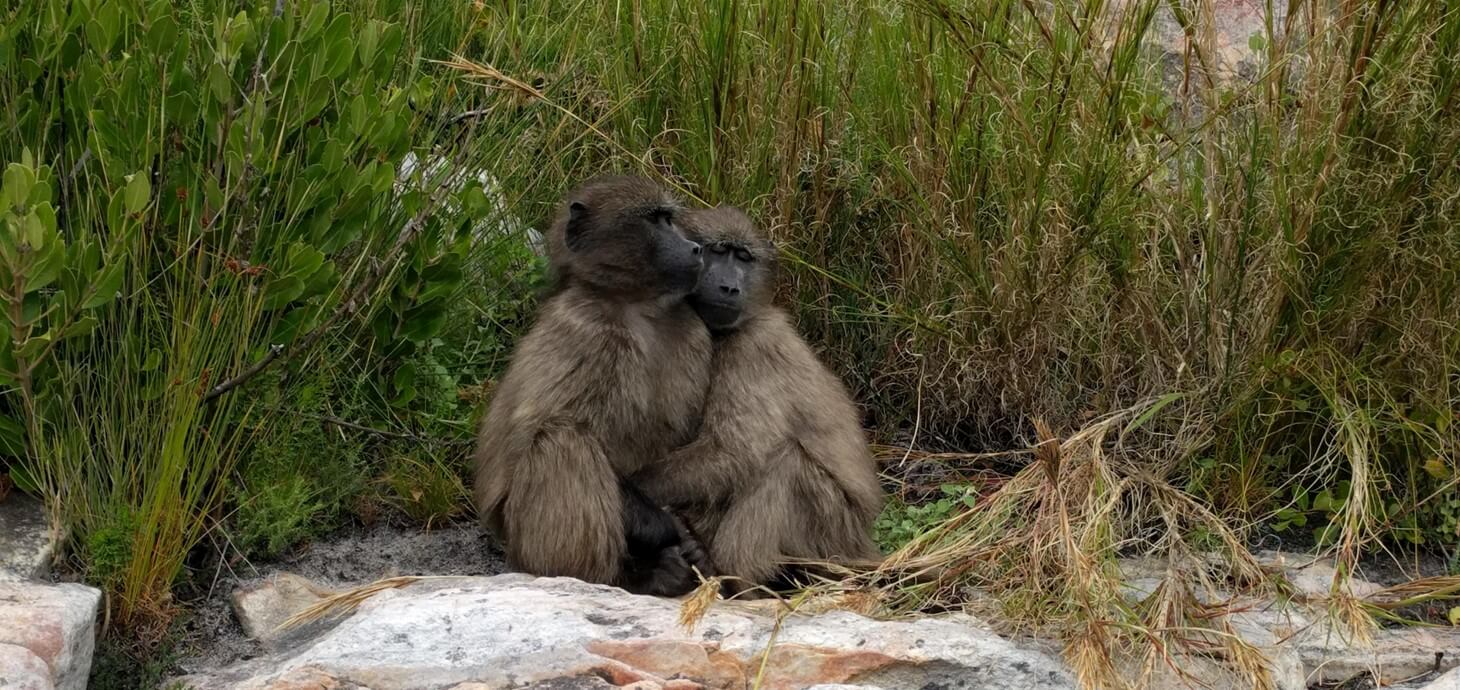
Photo credit: Dr Charlotte Christensen
Scientists from Swansea University and the University of Cape Town have tracked social grooming behaviour in wild baboons using collar-mounted accelerometers.
The study, published in the journal Royal Society Open Science, is the first to successfully calculate grooming budgets using this method, which opens a whole avenue of future research directions.
Using collars containing accelerometers built at Swansea University, the team recorded the activities of baboons in Cape Town, South Africa, identifying and quantifying general activities such as resting, walking, foraging and running, and also the giving and receiving of grooming.
A supervised machine learning algorithm was trained on acceleration data matched to baboon video recordings and successfully recognised the giving and receiving grooming with high overall accuracy.
The team then applied their machine learning model to acceleration data collected from 12 baboons to quantify grooming and other behaviours continuously throughout the day and night-time.
Lead author Dr Charlotte Christensen of the University of Zurich said: "We were unsure whether a sensor on a collar would be able to detect a behaviour that involves such subtle movements, but it has worked. Our findings have important implications for the study of social behaviour in animals, particularly in non-human primates."
Social grooming is one of the most important social behaviours in primates and, since the 1950s, has become a central focus of research in primatology.
Previously, scientists have relied on direct observations to determine how much primates groom each other, and whilst direct observations provide systematic data, it is sparse and non-continuous, with the added limitation of researchers only being able to watch a few animals at a time.
Technology like the one used in this study is revolutionising the field of animal behaviour research and allowing exciting new areas of investigation.
Senior author Dr Ines Fürtbauer of Swansea University said: "This is something our team have wanted to do for years. The ability to collect and analyse continuous grooming data in wild populations will allow researchers to re-examine long-standing questions and address new ones regarding the formation and maintenance of social bonds, as well as the mechanisms underpinning the sociality-health-fitness relationship."
Read the paper in full Quantifying allo-grooming in wild chacma baboons (Papio ursinus) using tri-axial acceleration data and machine learning
